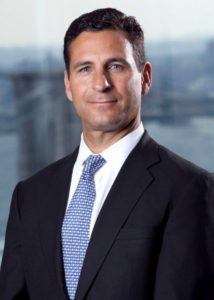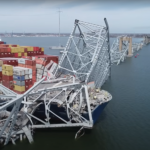Lou Iglesias took on a bigger role at Allied World late in the second quarter, moving from president of North American operations to CEO of Global Insurance.
Executive Summary
At about the same time as Lou Iglesias quietly took the reins of Global Insurance without any formal public announcement, Allied World was capturing headlines externally, with Toronto-based Fairfax Financial Holdings Ltd. closing a $4.9 billion deal to acquire all of Allied World. Iglesias described the impacts of the Fairfax deal in an interview with Carrier Management.Coming soon in CM magazine: A culture of responsive risk takers sets Allied World apart from larger competitors, according to Iglesias, who explains that the recent organizational change, creating a Global Insurance operation, will help him—as CEO of the worldwide segment—to ensure that the culture is consistent around the world.
In an interview with Carrier Management a few months later, Iglesias discussed the benefits of the organizational change that wasn’t announced publicly and the impact of more widely reported news: the $4.9 billion acquisition of Allied World by Fairfax.
While the marketing materials of the 16-year-old company now say, “Allied World: A Fairfax Company,” little else has changed, Iglesias confirmed.
“Their operating companies run independently. That was their commitment, and they’ve lived up to every word of that,” Iglesias said, referring to Fairfax Chair and CEO Prem Watsa and his team. “We’re not merging with other Fairfax companies. You’re not seeing us sit at a table to decide who’s in and who’s out. That is not happening.”
What is the benefit of the deal for Fairfax?
 Allied World is “a midsized company operating in a large account world,” Iglesias said. “We were successful” already, he said, attributing the company’s ability to compete against commercial lines heavyweights to a responsive culture. (See related article, “Allied World’s Cultural Edge: Competing With Giants to Grow Specialty Business,” in Carrier Management’s fourth-quarter print magazine.) “But we didn’t have the huge balance sheet. If any Fortune 500 customers had that worry in the past, it’s gone now,” he said. “We were never Berkshire Hathaway. We were never AIG. We were never Zurich. We never wanted to be. Now, we have this big balance sheet behind us, which I think helps.”
Allied World is “a midsized company operating in a large account world,” Iglesias said. “We were successful” already, he said, attributing the company’s ability to compete against commercial lines heavyweights to a responsive culture. (See related article, “Allied World’s Cultural Edge: Competing With Giants to Grow Specialty Business,” in Carrier Management’s fourth-quarter print magazine.) “But we didn’t have the huge balance sheet. If any Fortune 500 customers had that worry in the past, it’s gone now,” he said. “We were never Berkshire Hathaway. We were never AIG. We were never Zurich. We never wanted to be. Now, we have this big balance sheet behind us, which I think helps.”
A second big benefit is that “it takes away the uncertainty for our employees because M&A is active in our industry,” Iglesias said. “I think M&A is going to continue to be active out of need,” he said, noting that employees worry about being caught up in mergers and losing their jobs. “We know that won’t happen now. It gives our people a lot more security.”
“While we continue to run independently, we have many colleagues now in Fairfax that have all different products that we may be able to partner with,” he said, referring specifically to sharing product knowledge in areas where Allied World or another Fairfax insurer has expertise. “But it’s very clear that we’re not merging companies—and we’re not going to have the disruption of merging companies. So it allows us to stay focused.”
As for Allied World leaders getting together with executives of Crum & Forster, Odyssey Re, and other Fairfax insurance and reinsurance operations, Iglesias said a CEO Forum takes place once a year.
What about worries about aggregation of risk across the companies? “Each company keeps its own capital. We’re able to write within our Allied World capital appetite,” Iglesias replied. “It truly is a very unique model because it provides the security of Fairfax, but it’s an entrepreneurial model where the operating companies really do run independently. We know our capital base allocated to us. We know our risk and PML appetites. We’re able to operate that way, and that was very attractive to us when we did the transaction.”
Asked about the idea of Allied World becoming an acquirer any time soon, he said: “Our philosophy will continue to be the same under Fairfax as it was before we were acquired. If we see an opportunity that we think will be accretive to our company—get us into geography, get us into products, be accretive to our bottom line—we will look into that and go after that if we think it’s right.”
With the merger question out of the way for Allied World, Iglesias’s own role in overseeing a bigger portion of the company has some advantages. “It allows me to see the global picture from an expense standpoint rather than splitting it up between North America and Asia and London. And so we’ll be able to get some economies of scale from being able to see how we want to arrange our service groups to make sure that we’re really the most efficient that we could be,” he said.
During an hour-long interview, Iglesias also stressed the importance of having a culture of responsiveness at Allied World. The structural change that created a Global Insurance operation from pieces in North America, Europe and Asia, he said, will help him—as CEO of the worldwide segment—to ensure that the culture is consistent around the world.
In addition, organizationally, having a global platform creates stronger product knowledge, he said, noting that for products like financial lines, M&A insurance and casualty there is a lot of crossover in London and North America. Bringing people together to talk about the products is bound to create more value, he suggested.
During the interview, Iglesias also spoke about product development originating from high-potential teams charged with delivering innovative ideas, including one of the latest—a partnership with a professional drone service provider (DataWing) to serve as a resource for clients. The innovators, illustrating the entrepreneurial spirit of the workforce overall, participate on the team to come up with new ideas in addition to their day jobs, and they get full access to the senior management team, with a specific sponsor assigned to any project that gets the green light.
Asked about the broader industry picture and the need for others to be involved in M&A, he noted that emerging profit pressures are part of the reason. “The industry had redundant reserves for a while and has had a lack of catastrophes for a while. Some of the companies have used those things to provide profitability, but the redundancies are kind of starting to run their course. Now we do have cat losses, so you’re going start to see the stresses on companies now.”
They may start asking themselves whether they should continue to go it alone or try to get bigger and rethink their strategies. “There’s already been a good amount of M&A in our business. I think you’ll see some more of that…Margins are there, but they’re tougher and tougher. We’ve been kind of bouncing along the bottom of a cycle for a while, and I think there’s some M&A that needs to run its course.”




















 Progressive Gains as Drivers Shop Around for Auto Insurance—Again
Progressive Gains as Drivers Shop Around for Auto Insurance—Again  Uncertainty Keeps Prices Up; No Prior-Year Loss Development: Travelers
Uncertainty Keeps Prices Up; No Prior-Year Loss Development: Travelers  Maritime Law Invoked By Ship Owner in Baltimore Bridge Collapse to Cover Salvage Costs
Maritime Law Invoked By Ship Owner in Baltimore Bridge Collapse to Cover Salvage Costs  Going, Going, Gone: ‘Disruption’ to Shrink Traditional Premiums for Auto
Going, Going, Gone: ‘Disruption’ to Shrink Traditional Premiums for Auto 







